Is it true you get shorter as you get older?
Have you ever looked at your grandparents as the years went by and wondered if they got shorter every year, or was it an optical illusion as you grew? Well don’t worry, because it is normal for everyone to lose some height as they age.
Why do we shrink as we age? Over the years, the discs between your spine’s vertebrae flatten, your muscles start to lose mass and the spaces between your joints will narrow.
Have you ever looked at your grandparents as the years went by and wondered if they got shorter every year, or was it an optical illusion as you grew? Well don’t worry, because it is normal for everyone to lose some height as they age.
Why do we shrink as we age? Over the years, the discs between your spine’s vertebrae flatten, your muscles start to lose mass and the spaces between your joints will narrow.
Based on the National Library of Medicine, people typically lose almost one-half inch (about 1 centimetre) every 10 years after age 40. While losing some height as you get older is normal, a significant loss of height can be attributed to osteoporosis.
Taking care of your bones will help you reach your full potential to perform at your best. Find out more on osteoporosis and some vital advice on taking care of your bones from the expert, Dr Ahmad Norshahrid Zahari, Orthopaedic Spine Surgeon from KPJ Sentosa KL Specialist Hospital.

What is Osteoporosis?
According to Dr Ahmad, osteoporosis, or porous bones, is a systemic disease in which the bones lose density. It causes the bones to become thin, weak, more fragile and would fracture easily even if it is only a trivial injury. Having osteoporotic fractures can reduce mobility and may affect quality of life.
When you’re young, your body makes new bones faster than it breaks down old bones and your bone mass increases. After your early 20s this process slows, and most people reach their peak bone mass by age 30. As people age, bone mass is lost faster than it’s created.
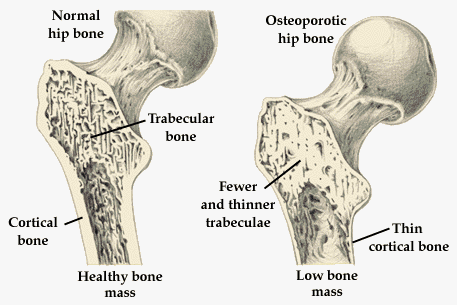


The common areas of the bones where osteoporosis would occur?
“Osteoporosis affects all bones of the body, and fractures usually occur at the regions with more cancellous bones since they are more porous and active in bone remodelling than cortical bones. Examples includes:
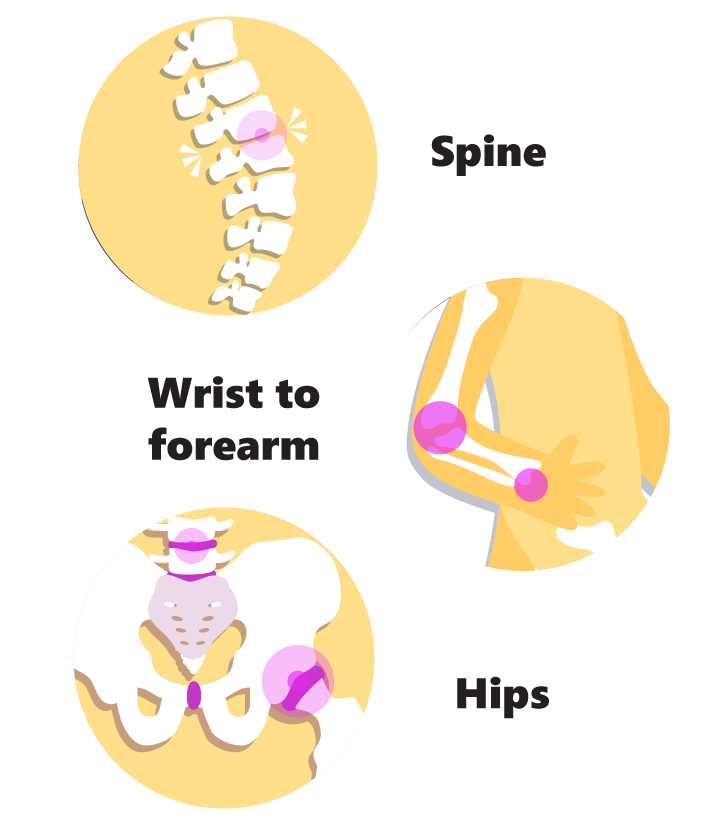

Based on the National Library of Medicine, people typically lose almost one-half inch (about 1 centimetre) every 10 years after age 40. While losing some height as you get older is normal, a significant loss of height can be attributed to osteoporosis.
Taking care of your bones will help you reach your full potential to perform at your best. Find out more on osteoporosis and some vital advice on taking care of your bones from the expert, Dr Ahmad Norshahrid Zahari, Orthopaedic Spine Surgeon from KPJ Sentosa KL Specialist Hospital.



What is Osteoporosis?



A normal bone (left) and one with osteoporosis (right).
Image Source: Midlands Orthopaedics
According to Dr Ahmad, osteoporosis, or porous bones, is a systemic disease in which the bones lose density. It causes the bones to become thin, weak, more fragile and would fracture easily even if it is only a trivial injury. Having osteoporotic fractures can reduce mobility and may affect quality of life.
When you’re young, your body makes new bones faster than it breaks down old bones and your bone mass increases. After your early 20s this process slows, and most people reach their peak bone mass by age 30. As people age, bone mass is lost faster than it’s created.
The common areas of the bones where osteoporosis would occur?
“Osteoporosis affects all bones of the body, and fractures usually occur at the regions with more cancellous bones since they are more porous and active in bone remodelling than cortical bones. Examples includes:


Spine
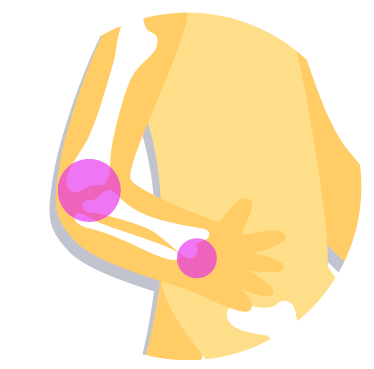

Wrist to forearm


Hips
Can we stop bone loss from happening?
According to Dr Ahmad Norshahrid, we cannot stop our bone loss, because it is a natural ageing process and also because it has to do with our hormonal changes when we age, especially for women when their estrogen levels start to decline.
However, we can reduce our bone loss progression by taking the necessary amount of calcium as part of balanced diet which can be found in:
-
Milk
-
Dairy products
-
Green leafy vegetables
-
Soy and soy products
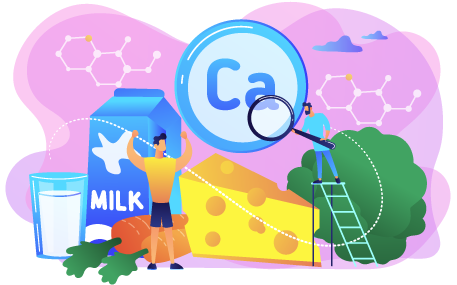


It is even more effective if you start consuming food intake with adequate amounts of calcium in your early years. Then when you become older it will serve as a cloak of protection for your bones.
How much calcium and vitamin D do I need every day?
Based on the Recommended Nutrient Intakes (RNI) for Malaysia, 2017, the calcium intake for young people is 1000mg per day. For women who are in their menopause stage, they should consume 1200mg of calcium per day.
The body needs vitamin D to absorb calcium. Without enough calcium, the body would take calcium from its stores in the bones, which weakens existing bone and prevents the formation of strong, new bone.
You can get vitamin D in three ways:
-
Through the skin from sunlight,
-
Your Diet
-
Supplements
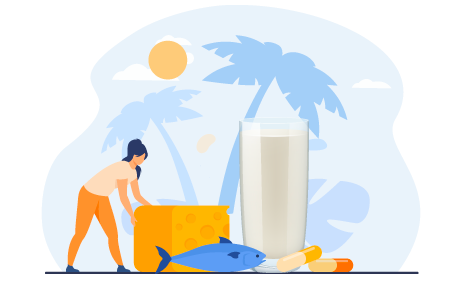

It is recommended a daily vitamin D intake of 15 – 20 µg, RNI,2017. Examples of Vitamin D-rich foods are egg yolks, saltwater fish, liver, and fortified milk.
Can we stop bone loss from happening?
According to Dr Ahmad Norshahrid, we cannot stop our bone loss, because it is a natural ageing process and also because it has to do with our hormonal changes when we age, especially for women when their estrogen levels start to decline.
However, we can reduce our bone loss progression by taking the necessary amount of calcium as part of balanced diet which can be found in:
-
Milk
-
Dairy products
-
Green leafy vegetables
-
Soy and soy products
It is even more effective if you start consuming food intake with adequate amounts of calcium in your early years. Then when you become older it will serve as a cloak of protection for your bones.



How much calcium and vitamin D do I need every day?
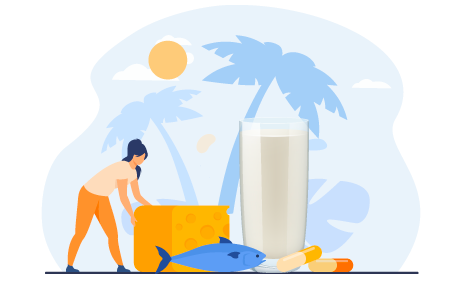

It is recommended a daily vitamin D intake of 15 – 20 µg, RNI,2017. Examples of Vitamin D-rich foods are egg yolks, saltwater fish, liver, and fortified milk.
Based on the Recommended Nutrient Intakes (RNI) for Malaysia, 2017, the calcium intake for young people is 1000mg per day. For women who are in their menopause stage, they should consume 1200mg of calcium per day.
The body needs vitamin D to absorb calcium. Without enough calcium, the body would take calcium from its stores in the bones, which weakens existing bone and prevents the formation of strong, new bone.
You can get vitamin D in three ways:
-
Through the skin from sunlight
-
Your Diet
-
Supplements.
Tips to keep your bones strong
Be physically active by doing regular exercise. Weight bearing exercises such as jogging, hiking and walking will build up your bones. Stay away from substance abuse such as smoking, drinking excessive alcohol as these substances would reduce your bone mass in the long run.
With a balanced diet and active lifestyle
We can keep our bones and muscles strong.
Moving might feel difficult as we age since we will lose flexibility and strength over time. Did You Know? Study shows¹ that those who consume 2 glasses of milk that comes with MFGM (milk fat globule membrane) and important nutrients along with regular exercise experienced:
-
40% more improvement in muscle mass
-
3x the improvement in balance
-
2x the improvement in flexibility
¹ Compared to control. Source: Daly R et al. (2020) AJCN.112(2):427-446
Let’s stay active and eat a balanced diet every day. Try Anlene milk today.
Let’s take milk as part of a daily balanced diet and stay active to support our mobility, so that we can do more everyday.
Anlene Gold 5X™



Anlene Gold 5X™ is scientifically formulated, with MFGM Active™, High Protein, Calcium, Collagen and 10 Vitamins and Minerals, with no added sugars. It is recommended for adults 45 years old and above. Let’s care for mobility with the right nutrition & exercise!
Anlene Actifit 3X™



Taking care of your bones, joints and muscles should start as early as possible to support your active lifestyle.
Anlene Actifit 3X has 50% more nutrients** and contains high calcium, protein and collagen. This is great for adults to incorporate as part of their daily lifestyle. Let’s stay active to maintain everyday mobility.
**Referring to Calcium and Vitamin C when compared to 100 g Full Cream Milk Powder.
Source: Nutrient composition of Malaysian foods (1997).
Tips to keep your bones strong
Be physically active by doing regular exercise. Weight bearing exercises such as jogging, hiking and walking will build up your bones. Stay away from substance abuse such as smoking, drinking excessive alcohol as these substances would reduce your bone mass in the long run.
With a balanced diet and active lifestyle, we can keep our bones and muscles strong.
Moving might feel difficult as we age since we will lose flexibility and strength over time. Did You Know? Study shows¹ that those who consume 2 glasses of milk that comes with MFGM (milk fat globule membrane) and important nutrients along with regular exercise experienced:
-
40% more improvement in muscle mass
-
3x the improvement in balance
-
2x the improvement in flexibility
¹ Compared to control. Source: Daly R et al. (2020) AJCN.112(2):427-446
Let’s stay active and eat a balanced diet every day. Try Anlene milk today.
Let’s take milk as part of a daily balanced diet and stay active to support our mobility, so that we can do more everyday.



Anlene Gold 5X™
Anlene Gold 5X™ is scientifically formulated, with MFGM Active™, High Protein, Calcium, Collagen and 10 Vitamins and Minerals, with no added sugars. It is recommended for adults 45 years old and above. Let’s care for mobility with the right nutrition & exercise!



Anlene Actifit 3X™
Taking care of your bones, joints and muscles should start as early as possible to support your active lifestyle.
Anlene Actifit 3X has 50% more nutrients** and contains high calcium, protein and collagen. This is great for adults to incorporate as part of their daily lifestyle. Let’s stay active to maintain everyday mobility.
**Referring to Calcium and Vitamin C when compared to 100 g Full Cream Milk Powder.
Source: Nutrient composition of Malaysian foods (1997).

